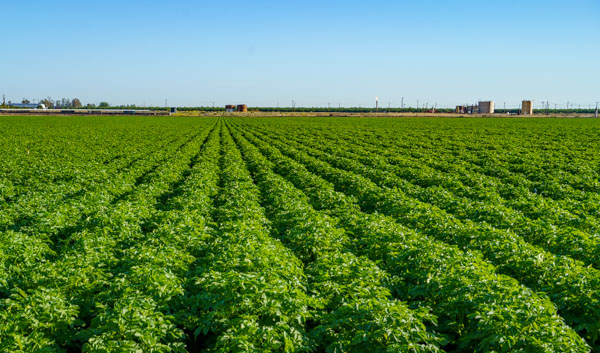Row crop farming is a cornerstone of agricultural production, involving the cultivation of crops in rows to facilitate efficient planting, growth, and harvesting. Common row crops include corn, soybeans, cotton, and wheat, each requiring specific practices to optimize yield and quality. For farmers considering or currently engaged in row crop farming, understanding the benefits and challenges is essential for success.
Benefits of Row Crop Farming

- Efficient Use of Space: Row crop farming allows for optimal use of available land. By organizing crops in rows, farmers can maximize planting density while ensuring each plant has adequate space to grow, receive sunlight, and absorb nutrients.
- Mechanization and Automation: One of the key advantages of row crop farming is the ability to use machinery for various farming activities. Planting, cultivating, and harvesting can be mechanized, reducing labor costs and increasing efficiency. This mechanization also allows for more precise application of inputs like fertilizers and pesticides, enhancing crop health and yield.
- Weed and Pest Management: Row planting facilitates easier weed and pest control. Farmers can implement targeted strategies such as mechanical cultivation, selective herbicide application, and integrated pest management (IPM) practices. These methods help maintain healthy crops while minimizing environmental impact.
- Soil Conservation: Practices like crop rotation, cover cropping, and contour farming help maintain soil structure, fertility, and moisture levels, reducing erosion and improving long-term sustainability.
Challenges
- Weather Dependence: Row crop farming is heavily influenced by weather conditions. Droughts, excessive rainfall, and temperature extremes can all impact crop growth and yield. Farmers must be prepared to adapt their practices to changing weather patterns and invest in irrigation systems or drought-resistant crop varieties as needed.
- Soil Degradation: Intensive row cropping can lead to soil degradation if not managed properly. Continuous monocropping can deplete soil nutrients and increase susceptibility to erosion. Implementing sustainable practices like crop rotation and cover cropping is crucial to maintaining soil health.
- Pest and Disease Pressure: Row crops can be vulnerable to pests and diseases, which can spread rapidly due to the uniform planting pattern. Farmers need to employ effective pest and disease management strategies, including crop rotation, resistant varieties, and IPM.
- Market Fluctuations: Prices for commodities like corn, soybeans, and wheat can vary widely based on global supply and demand, trade policies, and other factors. Farmers must stay informed about market trends and be prepared to adjust their crop choices and marketing strategies accordingly.
Streamlining Your Farming with AgNote
Given the complexities and challenges of row crop farming, efficient management and data tracking are essential. AgNote farm management software provides farmers with the tools to monitor and manage their crops. Crops such as row, permanent and vegetable planting operations effectively. From tracking planting dates and input applications to managing harvest data and analyzing yields, AgNote helps farmers stay organized and make informed decisions.
AgNote simplifies the process of implementing sustainable practices, ensuring compliance with regulatory requirements, and optimizing resource use. By using AgNote, row crop farmers can enhance productivity, reduce costs, and improve overall farm management.
AgNote includes a free 7-day trial, so farmers can register today and experience the benefits firsthand. Optimize your row crop farming operations with AgNote – register now and take control of your farm’s future.